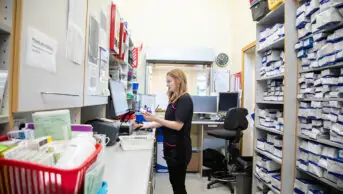
Julia Robinson/The Pharmaceutical Journal
Pharmacists have an important role to play in understanding precision medicines in order to ensure the right patients receive the right treatments, according to the author of a new report from the QuintilesIMS Institute, a global organisation that brings the public and private sector together to strengthen the role of information in advancing healthcare across the world.
The report, launched on 23 May 2017 at the International Pharmaceutical Federation’s Pharmaceutical Sciences World Congress 2017 in Stockholm, lays out a framework for understanding the challenges and opportunities presented by systems therapeutics, and specifically, precision medicines.
The number of precision medicines has increased steadily since 1977, but continues to present challenges associated with clinical decision-making, health system diagnostics, patient privacy, big data and cost implications.
“Pharmacists need to understand what’s happening around them regarding the availability of precision medicines and their profiles,” says Murray Aitken, executive director of the QuintilesIMS Institute and co-author of the report ‘Upholding the clinical promise of precision medicine: current position and outlook’.
“The pharmacology of precision medicines is complex. Pharmacists have an important role in interpreting diagnostic results and ensuring that the requisite testing has been and is being done so that the right patients are treated,” he adds.
Aitken points out that since 45% of precision medicines are coming onto the market with ‘black box warnings’, pharmacist engagement with patients is key to ensure that adverse effects are picked up quickly.
“There’s no question that the science is advancing rapidly,” says Aitken.
“The question is whether the healthcare system is advancing fast enough to ensure patients will benefit from these medicines.”


